 I admit it; I like aquariums. The public ones with big tanks, the sharks, the whales. This probably started when I was young and first went to the New England Aquarium in Boston. Its huge central tank with fish larger than me – and made to seem even larger by the refraction of the glass – was fascinating. By the time I was in junior high school I knew I wanted to be a marine biologist. Just like Jacques Cousteau.
I admit it; I like aquariums. The public ones with big tanks, the sharks, the whales. This probably started when I was young and first went to the New England Aquarium in Boston. Its huge central tank with fish larger than me – and made to seem even larger by the refraction of the glass – was fascinating. By the time I was in junior high school I knew I wanted to be a marine biologist. Just like Jacques Cousteau.
It was only later that I realized there was only one good-paying gig in marine biology, and Monsieur Cousteau had that locked up pretty tight.
But still, my fascination with aquariums has never waned. I’ve made it a point to visit the big public aquariums all over the United States, with a large number also from other parts of the world. By current count, I’ve seen exactly 60 aquariums. Follow the links to stories and photos about the features that make each one interesting.
NORTH AMERICA
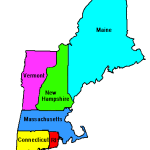 New England
New England
- New England Aquarium (Boston, MA)
- Mystic Aquarium (Mystic, CT)
- Maine Aquarium (Saco, ME)
- National Marine Fisheries Service Aquarium (Woods Hole, MA)
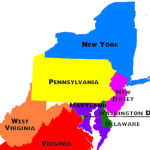 Mid-Atlantic
Mid-Atlantic
- New York Aquarium (Brooklyn, NY)
- Camden Aquarium (Camden, NJ)
- Jenkinson’s Aquarium (Point Pleasant Beach, NJ)
- National Aquarium (Baltimore, MD)
- National Aquarium (Washington, DC)
- Long Island Aquarium (Riverhead, NY)
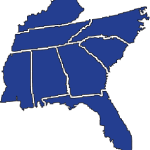 Southeastern US
Southeastern US
- Ripley’s Aquarium of Myrtle Beach (Myrtle Beach, SC)
- North Carolina Aquarium (Roanoke Island, NC)
- Sea World – Florida (Orlando, FL)
-
- Georgia Aquarium (Atlanta, GA)
- The Florida Aquarium (Tampa, FL)
- Ripley’s Aquarium of the Smokies (Gatlinburg, TN)
- Chattanooga Aquarium (Chattanooga, TN)
- John Pennenkamp Coral Reef State Park Aquarium (Key Largo, FL)
- Key West Aquarium (Key West, FL)
- Audubon Aquarium of the Americas (New Orleans, LA)
- Mote Marine Laboratory and Aquarium (Sarasota, FL)
- South Carolina Aquarium (Charleston, SC)
- North Carolina Aquarium at Fort Fisher (Kure Beach, NC)
- Newport Aquarium (Newport, KY)
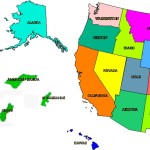 Western US/Canada
Western US/Canada
- Steinhart Aquarium (San Francisco, CA)
- Aquarium of the Bay (San Francisco, CA)
- Seattle Aquarium (Seattle, WA)
- Monterey Aquarium (Monterey, CA)
- Vancouver Aquarium (Vancouver, BC, Canada)
- Aquarium of the Pacific (Long Beach, CA)
- Mandalay Bay Hotel Aquarium (Las Vegas, NV)
- Sea World – California (San Diego, CA)
- Oregon Coast Aquarium (Newport, OR)
- Seaside Aquarium (Seaside, OR)
Miscellaneous North America/Bermuda
- Bermuda Aquarium (Hamilton, Bermuda)
- Aquarium du Quebec (Quebec, Canada)
- John G. Shedd, Aquarium (Chicago, IL)
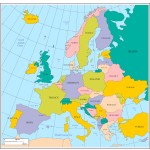 EUROPE
EUROPE
- London Aquarium (London, UK)
- Deep Sea World, Edinburgh Aquarium (Edinburgh, Scotland, UK)
- Lisbon Oceanario (Lisbon, Portugal)
- Valencia Aquarium (Valencia, Spain)
- Loro Park Aquarium (Tenerife, Canary Islands, Spain)
- Aquaria Vattenmuseum (Stockholm, Sweden)
- Bergen Aquarium (Bergen, Norway)
- Dubrovnik Aquarium (Dubrovnik, Croatia)*
- The Blue Planet, Copenhagen Aquarium (Copenhagen, Denmark)
- L’Aquarium Barcelona (Barcelona, Catalonia, Spain)
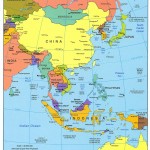 ASIA
ASIA
- Ocean Park, Hong Kong Aquarium (Hong Kong, China)
- Beijing Aquarium (Beijing, China)
- Shanghai Ocean Aquarium (Shanghai, China)
- Osaka Aquarium (Osaka, Japan)
- Busan Sea Life Aquarium (Busan, South Korea)
- Lotte World Aquarium (Seoul, South Korea)
- COEX Aquarium (Seoul, South Korea)
- Manila Ocean Park (Manila, The Philippines)
- S.E.A. Aquarium (Singapore)
- Big Fish Aquarium (Gardens by the Bay, Singapore)
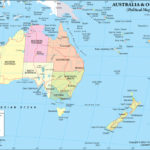 OCEANIA
OCEANIA
- Sea Life Sydney Aquarium (Sydney, Australia)
- Cairns Aquarium (Cairns, Australia)
- Sea Life Melbourne Aquarium (Melbourne, Australia)
* Technically I didn’t see the entire aquarium since they only accepted Croatian Kuna and refused credit cards, Euros, and dollars, so my view was only of the main area visible from the entrance (but the aquarium is tiny).












Pingback: A passion for public aquariums | Science Traveler
Pingback: I Saw a Fish, or I Fish I Saw | Science Traveler
Pingback: Nikola Tesla Goes to the Silent Auction | Science Traveler
Pingback: Ripley’s Myrtle Beach Aquarium – Believe it or Not | Science Traveler
Pingback: Preview of Tennessee Road Trip | Science Traveler
Pingback: Science Traveling Lisbon’s Oceanarium | Science Traveler
Impressive list. I don’t know how the Tokyo Sea Life Park would compare. Unfortunately, their most impressive collection suffered a mysterious disaster this year. They have a huge, donut-shaped tank that has a strong current moving inside. Viewers entering the inside of the tank could see a collection of very large open water fish that included 69 rare Bluefin Tuna that were part of a special breeding program. I think it was a couple of months back that the Japanese news ran a story that all but one of the tuna had died over a four-month period, and that with one exception they had no idea why.
I guess I missed the Tokyo park when I was there. So sad to hear about the tuna.
When I started this fascination with aquariums I enjoyed seeing the different kinds of fish, etc. I was less enthralled by the large wildlife shows (Orcas, dolphins, etc). In more recent years I’ve become more concerned with how the animals are treated.
Two cases in point. One of the huge whale sharks in Atlanta was clearly disturbed; it kept swimming in a tight circle despite plenty of room for it and the other three whale sharks. Then on this last trip there was a walrus at the Quebec City aquarium that kept moaning and banging on the grate to get back inside rather than swim in a pool that seemed large until you figured in the size of the walrus.
I had thought many years ago of doing a kind of tour book of aquariums. My thoughts now are on a book that discusses the issues, physical and moral, of keeping large sea animals on display.
I’ve had similar feelings at times, and I’ve become rather averse to participating in things that amount to animals-as-entertainment — some elephant shows in Thailand come to mind. However, I also realize that there is a great deal of genuine research and long-term benefit associated with places such as aquariums (and elephant refuges), and that they need to have some way of staying financially viable. The tuna at the Tokyo Sea Life Park, for example, were part of breeding-research program that they’ve been conducting for about 25-years — something of genuine importance in a time when the human impact on the world’s oceans threatens the extinction of such species.
Conversely, however, I was horrified by a group of obviously neurotic caged bears that I saw in Hokkaido a few years back. And I’m not sure where I stand on Japanese whaling, where the term “research” is clearly being used to excuse commercially-motivated hunting. I try to be realistic, but I don’t have any desire to inflict suffering as a mere personal indulgence.
That last book idea sound to me like a good one.
I concur with your thoughts on this. I’ll probably do a post on the walrus, as soon as I can find time to go through all my photos from the last few trips. Might be a year or two. 😉
Pingback: Science Traveling the World – One Aquarium at a Time | Science Traveler
Pingback: Being Inside the Fish Bowl of St. Barts (aka, We All Live in a Yellow Submarine) | Science Traveler
Pingback: Jellyfish at the Audubon Aquarium of the Americas – New Orleans | Science Traveler
Pingback: 31 Flavors – Aquarium of the Pacific | Science Traveler
Pingback: Den Blå Planet, Copenhagen Aquarium – My 50th Aquarium | Science Traveler
Pingback: Oregon Adds Two New Aquariums to My Life List | Science Traveler
Should you find yourself in Tokyo, I’m familiar with two aquariums that might interest you. The Sumida Aquarium near the Sky Tree is small, but modern and notable for its Jellyfish and unusual seafloor animal displays. It also has a penguin tank/enclosure with an island in the middle, where it’s possible to see the marine-birds underwater as they swim at full speed around the island… which is actually quite amazing.
The Kasai Rinkai Aquarium (aka.: “Tokyo Sea Life Park”) is most notable for its huge ring-shaped tank in which the water is kept circulating. The tank is viewed from the inside, and allows for some very large fish. When I was there perhaps five-years ago, they had a small school of very large tuna, and even a whale shark in the tank. I understand that they lost some of the tuna a couple of years ago. It was a very big deal in the Tokyo news.
I also have to give a plug for the “National Museum of Nature and Science” in Ueno Park. It has a sea-life section worth seeing. Until I went through it, I had no idea about the Japanese spider crab!
Cool. I wasn’t aware of any of these. I would definitely like to get back to Tokyo as my first (and only) visit was a bit of a whirlwind (not to mention rainy).
Just noticed my previous reference to the Tokyo Sea Life Park in the “Older Comments”. Thought I’d mentioned it before. As for the rain… that’s about one-in-three days in Tokyo.
Interesting. I didn’t know it hides older comments.
Pingback: Lincoln in Australia – Wiegers Calendar June – David J. Kent